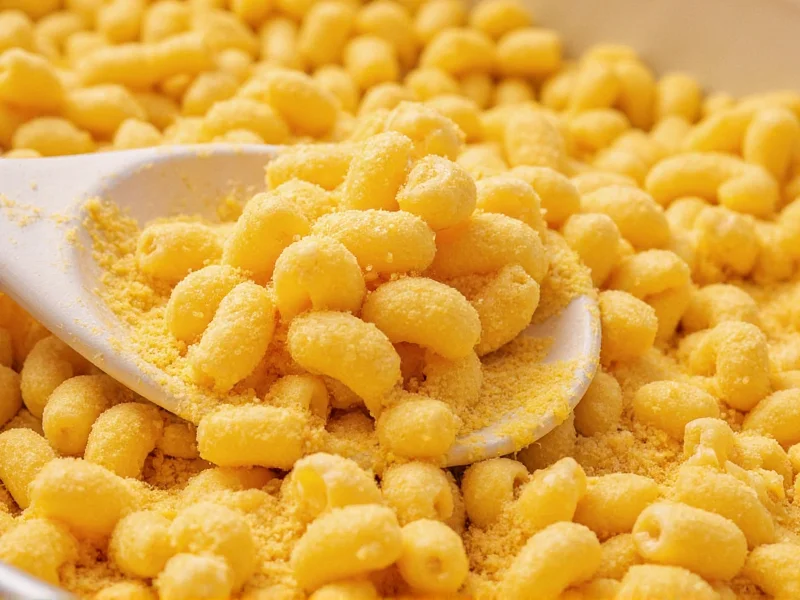Essential Components of Mac and Cheese Seasoning
Creating the perfect mac and cheese seasoning requires understanding which spices complement dairy flavors without masking the cheese's natural richness. The most effective blends focus on enhancing rather than overwhelming the primary ingredient. Mustard powder serves as the secret weapon in professional mac and cheese recipes—it doesn't make the dish taste like mustard but rather amplifies the cheese flavor through its natural compounds.
When developing your homemade mac and cheese seasoning recipe, consider these core elements that form the foundation of successful blends:
| Spice | Primary Function | Recommended Amount per Pound of Pasta |
|---|---|---|
| Mustard powder | Enhances cheese flavor | 1 teaspoon |
| Garlic powder | Adds savory depth | 1 teaspoon |
| Onion powder | Provides subtle sweetness | 1 teaspoon |
| Paprika | Contributes color and mild warmth | 1/2 teaspoon |
| Cayenne pepper | Adds subtle heat | Pinch (1/8 teaspoon) |
| Freshly ground black pepper | Provides aromatic complexity | To taste |
Advanced Flavor Profiles for Mac and Cheese Seasoning
While the classic blend works for traditional preparations, experimenting with mac and cheese flavor variations can transform this comfort food into something extraordinary. Professional chefs often create signature blends by incorporating additional elements that complement specific cheese varieties.
Smoky Bacon Variation
For a smoky mac and cheese seasoning blend, add 1/2 teaspoon smoked paprika and 1/4 teaspoon chipotle powder to the base recipe. These ingredients pair exceptionally well with sharp cheddar and complement cooked bacon bits. The smoked elements create depth without requiring liquid smoke, which can overpower delicate cheese flavors.
Spicy Jalapeño Version
When crafting spicy mac and cheese seasoning, increase cayenne to 1/4 teaspoon and add 1/2 teaspoon dried jalapeño flakes. For authentic heat that doesn't compromise creaminess, include 1/4 teaspoon of ground ancho chili. This combination provides layered heat that builds gradually rather than overwhelming the palate immediately.
Herb-Infused Classic
A gourmet mac and cheese seasoning blend benefits from dried herbs when used sparingly. Incorporate 1/2 teaspoon dried thyme and 1/4 teaspoon dried rosemary (crushed finely) into your base mix. These woody herbs complement aged cheeses particularly well. Avoid fresh herbs in the seasoning blend itself—they're better added at the end of cooking to preserve their volatile oils.
Precision Measurements for Perfect Seasoning
Understanding mac and cheese spice blend measurements prevents common mistakes that ruin otherwise perfect dishes. Many home cooks underestimate how seasoning requirements change based on cheese type and sauce volume. A critical factor often overlooked is that pre-shredded cheese contains anti-caking agents that affect flavor absorption.
When using block cheese you've shredded yourself, reduce the seasoning blend by 25% compared to recipes designed for pre-shredded cheese. The anti-caking agents in commercial shredded cheese mute flavor perception, requiring more seasoning to achieve the same taste intensity. For perfectly seasoned mac and cheese every time, follow this adjusted measurement guide:
- For homemade cheese sauce with block cheese: 2 teaspoons total seasoning per 8 oz cheese
- With pre-shredded cheese: 2.5 teaspoons total seasoning per 8 oz cheese
- When adding protein (bacon, chicken): Increase by 1/4 teaspoon per 8 oz protein
- For baked mac and cheese: Reduce initial seasoning by 20% (flavors concentrate during baking)
Avoiding Common Seasoning Mistakes
Even experienced cooks make critical errors when seasoning macaroni and cheese. The most frequent issue involves adding salt separately from the seasoning blend, resulting in oversalted dishes. Most seasoning blends already contain sufficient sodium when paired with cheese, which is naturally high in salt.
Another common mistake is adding all seasoning at the beginning of cooking. Heat-sensitive compounds in spices like paprika and cayenne degrade when exposed to prolonged high temperatures. For optimal flavor, add half your seasoning to the roux and the remaining half after removing the sauce from heat.
When creating custom mac and cheese seasoning mixes, avoid these pitfalls:
- Don't use curry powder as a shortcut—it contains turmeric that turns cheese sauce yellow
- Avoid pre-mixed blends with salt as the first ingredient
- Never substitute fresh garlic for garlic powder in the seasoning blend (causes bitterness)
- Don't add dried herbs directly to hot roux (burns and creates off-flavors)
Dietary Adaptations for Specialized Blends
Creating effective vegan mac and cheese seasoning requires different considerations than dairy-based versions. Plant-based cheese alternatives lack the complex flavor compounds that traditional cheese provides, necessitating additional umami elements. Add 1/4 teaspoon nutritional yeast and 1/8 teaspoon white miso powder to your base blend to compensate for the missing dairy complexity.
For gluten-free mac and cheese seasoning, ensure all spice components are certified gluten-free, as cross-contamination can occur in commercial spice blends. Many pre-made seasoning mixes use wheat derivatives as anti-caking agents. When making your own blend, verify each component's gluten status, especially with paprika and garlic powder, which commonly contain fillers.
Storage and Freshness Guidelines
The shelf life of your homemade mac and cheese spice blend significantly impacts flavor quality. Ground spices lose potency faster than whole spices—typically within 6 months when stored properly. For maximum freshness, store your blend in an airtight container away from light and heat. A dark glass jar in a cool pantry maintains potency longer than plastic containers.
Signs your seasoning blend has degraded include:
- Faded color (especially noticeable in paprika)
- Weak aroma when rubbed between fingers
- Requiring significantly more than usual to achieve flavor
- Developing a musty or stale smell
For restaurant-quality results, make small batches (enough for 4-6 uses) and refresh your supply monthly. Professional kitchens never use seasoning blends older than 30 days for critical applications like signature dishes.











 浙公网安备
33010002000092号
浙公网安备
33010002000092号 浙B2-20120091-4
浙B2-20120091-4